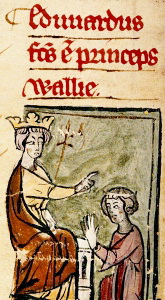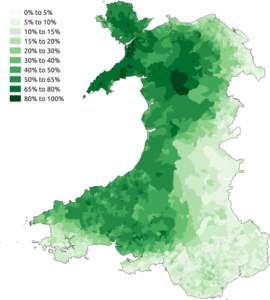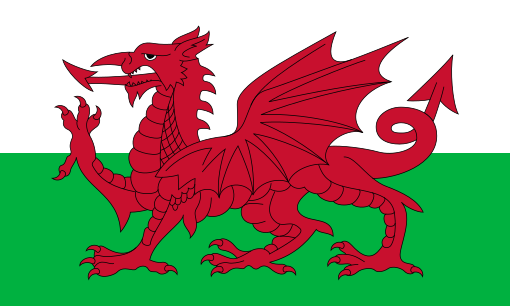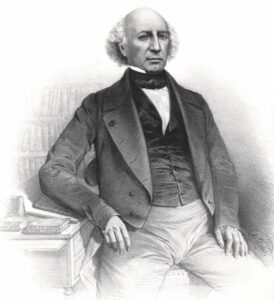As the world becomes more connected through trade and technology, our means of communicating with one another have become more standardized. However, as we connect with people from around the world, we are losing traditions in order to keep in pace with progress. As a result, cultures and languages have started to fade into history. This is true with the Celtic language. Today, only six living Celtic dialects are left in the world; they could once be found across Europe to parts of modern-day Turkey. Despite this vast range in the past, the Celtic languages have begun to disappear, and a number of living dialects have started to decline.1
Today, five of the remaining six dialects can only be found in the British Isles, while the sixth, Breton, remains in France. The Celtic languages spoken in Great Britain are Irish, Manx, Scottish Gaelic, Breton, Cornish, and Welsh, which is the largest of the remaining Celtic languages. What sets Welsh aside from her Celtic-tongue sisters is that it is not only a popular language, but a reviving language. The Welsh language is growing in the twenty-first century, with over 880,000 active speakers found primarily in Wales and England and a thousand speakers located in the Chubut Province in Argentina, a former colony of Wales, called Y Wladfa. These numbers are well on track with the Welsh Provincial government’s goal to have over a million active speakers in Wales by 2050.2
The Welsh Language, or Cymraeg as it is called in the Celtic dialect, is an ancient dialect of the British Isles and is a part of the Brythonic language brought there by the Celts in the seventh century BCE. This dialect survived the invasions of the Romans, Saxons, Vikings, and the Normans. Welsh is also the United Kingdom’s only de jure language. It is a legally-recognized national language, even though English is the de facto dialect of the British Isles.3 As J.R.R. Tolkien states, “Welsh is of this soil, this island, the senior language of the men of Britain: and Welsh is beautiful.”4

The Welsh and the English continued to interact throughout most of the early and mid-Medieval periods by trade or war. However, England is a large country, not only in size but also in terms of its population, economy, and military. This was unfavorable for the Welsh. Then Edward I of House Plantagenet, or as he is more popularly known, Edward Longshanks, the King of England, conquered Wales in a long and bloody campaign between 1277 and 1283.5
In response to the Welsh nobility stating that they would not kneel to a foreign king, Edward I had his first son and heir to the English throne born in Caernarfon. The newborn gained the name Edward of Caernarfon and, at age sixteen, was appointed Prince of Wales. This tradition continues to this day. The Crown Prince or Princess of England is given the title Sovereign of Wales, cementing English control over the kingdom. And so, England held total control over Wales. This is evidenced by the language of trade being English and the fact that most of the Welsh nobility spoke English. And yet, the Welsh culture and language managed to survive throughout the country.6
This is mainly because England could not focus on colonizing Wales, thanks to the Hundred Years’ War with France, lasting from 1337 to 1453. That was shortly followed by the English civil war called the War of the Roses from 1455 to 1487. The war gained its named because of the two families fighting over the succession, namely the House of York, whose family crest was a white rose, and their opponent House of Lancaster that bore a red rose. The war ended when Henry VII of the House of Tudor created a union between the red and white roses.
When King Henry VII ascended to the English throne, aggravation towards the Welsh language and culture ended, because the Tudor household and the newly crowned king was from Penmynydd, Wales. During his rule, he made reforms that benefited the Welsh. Then when his son, King Henry VIII, reigned, the same king who had England break away from the Roman Catholic Church passed the Wales Act of 1535 and 1542, allowing Welshmen to have the same rights as the English. This helped to preserve the Celtic language and culture founded in Wales.7
Welsh was widely used around the country until the twentieth century, when the language started to decline significantly. Now, most of the Welsh dialect is actively spoken on the north-western coast, in the countries of Caernarfonshire, Merioneth, and Anglesey. Welsh became viewed as a “bad” language, not because of its grammar but due to its status as a minority language. As a result, it currently holds little to no social or political gains within the Celtic languages. The resurgence of the Welsh language had a strangely violent start in 1936, with an arson attack on the Royal Air Force Bombing School in Pwllheli located on the llŷn peninsula. The arson attack was part of a demonstration of the Welsh nationalist movement and a protest against the decline of the Welsh dialect. It was carried out by Saunders Lewis, a professor at Swansea University and a founder of the Plaid Cymru party, along with two other men named D. J. Williams and Lewis Valentine.8

Professor Lewis committed his crime on the premises of environmentalism and pacificism. However, the two other arsonists acted out of concern for English soldiers and workers who were operating in what is traditionally the heart of the Welsh culture. Later, in 1962, Professor Lewis gave a speech, warning that Welsh is a dying language and that it would become extinct by the twenty-first century if peaceful or forceful actions were not taken to preserve the ancient tongue. As a result came a long streak of arson attacks at popular English tourist spots in the 1980s and 1990s. 9
When Lewis died at the age of 92 in 1985, by the time of his death, there was a Secretary of State for Wales; and the Plaid Cymru party sent nine members of the Welsh Parliament to the British Parliament and Welsh became a language recognized in the courts of law. Several revival programs in school, radio, and television are being spoken in Welsh.10 These programs affected people such as Iwan Rheon, who played Ramsay Bolton in Game of Thrones, and Taron Egerton, who played Gary “Eggsy” Unwin’s in the Kingsman series, into learning and speaking Welsh.11
Later, in the twenty-first century, programs such as Bilingualism Matters were founded by Professor Antonella Sorace of the developmental linguistics department at the University of Edinburgh. She stated in an interview, “Languages such as Welsh, that are not associated with political and economic power, are considered bad languages that aren’t worth learning, but this isn’t true.”12
Professor Sorace and many of her peers in Bilingualism Matter believe that the ability to speak multiple languages is beneficial for children in that it can help them learn mutual understanding. Welsh is becoming the standard for language revival. It is the blueprint for what steps must be taken to revive an endangered language. This model has been used on other Brythonic or Brittonic dialects, such as Cornish, Gallic, and Breton, which are Celtic dialects that are native to the British Isles and France.
This system could be what other endangered languages can use for their own revival. However, unlike most endangered dialects, Welsh has had the advantage of having its decline stopped before severe damage was done. It was still a spoken language in pockets in the interior and coastline of Wales, along with protection by the government.
However, the great obstacle for an endangered language is politics, and also the younger generations of the times; together, these represent a dangerous pair to rely on for survival, as our history and that of other world powers have shown, in suppressing the language and culture of a native population while mass killing them in order to control them. The younger generations learn to disregard or abandon the minority languages, and in some cases they even abandon the old ways in doing things, such as what happened to the Irish, or to many indigenous languages and their cultures.13

Yet the steps from the British and Welsh governments are the best model and standard to use if people want to revive their old languages, because the Welsh Government is taking the right steps, by using technology, such as the radio and television spoken in Welsh. Social problems at school and other incentives increase the use of the Welsh dialect. As a result of these measures from the Welsh government, the Celtic language has started to grow again; though not as dominant in the country as it once was, it now has over 800,000 active speakers in the country. The language is on track to meet the government’s goal for 1,000,000 by 2050; with those numbers, Welsh will be spoken by 1% of the population, which is a good start for the resurgence of a language.14
- David Greene, “Celtic Languages | History, Features, Origin, Map, & Facts | Britannica,” Britannica Online, Jan 20, 2023, https://www.britannica.com/topic/Celtic-languages. ↵
- Welsh Government, “Cymraeg 2050: A Million Welsh Speakers,” 2018, https://www.gov.wales/sites/default/files/publications/2018-12/cymraeg-2050-welsh-language-strategy.pdf. ↵
- Laura Jones, “Which Languages Are Spoken in the UK?,” Lingoda (website), February 16, 2021, https://blog.lingoda.com/en/what-languages-are-spoken-in-the-uk/. ↵
- “Welsh,” Tolkien Gateway, November 16, 2022, https://tolkiengateway.net/wiki/Welsh. ↵
- Ben Johnson, “Why the Revival of Welsh Became a Model for Minority Languages across the Globe,” Nation Cymru (website), November 26, 2021, https://nation.cymru/opinion/why-the-revival-of-welsh-became-a-model-for-minority-languages-across-the-globe/. ↵
- “Why the Revival of Welsh Became a Model for Minority Languages across the Globe,” Nation Cymru (website), November 26, 2021, https://nation.cymru/opinion/why-the-revival-of-welsh-became-a-model-for-minority-languages-across-the-globe/. ↵
- “Laws in Wales Acts (1535-42),” Exploring Celtic Civilizations, accessed May 5, 2023, https://exploringcelticciv.web.unc.edu/laws-in-wales-acts-1535-42/. ↵
- “Why the Revival of Welsh Became a Model for Minority Languages across the Globe,” Nation Cymru (website), November 26, 2021, https://nation.cymru/opinion/why-the-revival-of-welsh-became-a-model-for-minority-languages-across-the-globe/. ↵
- “Why the Revival of Welsh Became a Model for Minority Languages across the Globe,” Nation Cymru (website), November 26, 2021, https://nation.cymru/opinion/why-the-revival-of-welsh-became-a-model-for-minority-languages-across-the-globe/. ↵
- “The Welsh Language Standards (No. 7) Regulations 2018,” (Queen’s Printer of Acts of Parliament), accessed May 10, 2022, https://www.legislation.gov.uk/wsi/2018/441/made. ↵
- “‘A Star Is Born’ – Welsh Actor Taron Egerton Receives the Seal of Approval from Hollywood Bible Variety,” Wales Online (website), accessed January 13, 2023, https://www.walesonline.co.uk/lifestyle/showbiz/a-star-born–welsh-8380485. ↵
- “Wales Plans to Revive Welsh Language with One Million Speakers by 2050,” inews.co.uk, December 18, 2017, https://inews.co.uk/news/education/well-million-speaking-welsh-2050-says-government-111469. ↵
- “Why the Revival of Welsh Became a Model for Minority Languages across the Globe,” Nation Cymru (website), November 26, 2021, https://nation.cymru/opinion/why-the-revival-of-welsh-became-a-model-for-minority-languages-across-the-globe/. ↵
- “Wales Plans to Revive Welsh Language with One Million Speakers by 2050,” inews.co.uk, December 18, 2017, https://inews.co.uk/news/education/well-million-speaking-welsh-2050-says-government-111469. ↵




6 comments
Andrew Ponce
Hello Seth! The topic of this article is not one that many readers are familiar with, this being said I feel this reason is exactly why this article is so interesting to read for an audience. It is informative and captivating. It is also important for college students to learn about topics on culture and language. It is interesting to see how the history of the English monarch has impacted other places in the past. The author of this article does a good job of articulating the actions of importance of King Charles lll and the strength of a culture.. I personally enjoyed this article and the information given. Great publication!
Sudura Zakir
This piece was excellent and very timely. King Charles lll is the most recent monarch of England. He had been the Prince of Wales since 1969. Before becoming the Prince of Wales, Charles had studied Welch in Caernarfon. A nation’s language, culture, and borders have been crucial to its overall power ever since ancient times. Nice picture selection and awesome storyline. Impressive work!
Gaitan Martinez
Yes Mr. Roen I do have to agree that there are many cultures and languages that are dying. Personally, my grandmother was indigenous, her people were called the Zapotec. When my dad was younger, my grandmother tried to teach him her native language, but kids would make fun of my dad because he wasn’t speaking Spanish (my dad is Mexican). He got embarrassed, told my grandmother he didn’t wanna learn her language, and regretted that decision because it’s a dying language, not many people know how to speak it. This article is very similar on how the Spanish came, took over, and hid many indigenous cultures.
Seth Roen
This article was great and very timely…. King Charles lll had been invested as Prince of Wales since 1969; (After he had been required to learn Welch at age of 20)…The article points out that the strength of a Nation relates to the strength of its Culture , borders and language…
Richard Huber
This article was great and very timely…. King Charles lll had been invested as Prince of Wales since 1969; (After he had been required to learn Welch at age of 20)…The article points out that the strength of a Nation relates to the strength of its Culture , borders and language…
Richard Huber
Loved this article and its timeliness. The newest English Monarch is King Charles lll. Since 1969 , He had been The Prince of Wales. Charles had learned Welch at Caernarfon, before he was invested as Prince of Wales. Since early times, The strength of a nations language, culture and borders has been integral to the strength of the nation as a whole.